| Availability: | |
|---|---|
| Quantity: | |
Introduction:
The product depicted is a 24kV, 70kN Composite Suspension Insulator. This is a critical component used in overhead power transmission and distribution systems. Its primary function is to mechanically support live electrical conductors (wires) while simultaneously providing robust electrical insulation, preventing current from flowing to the grounded transmission tower or pole.
Unlike traditional porcelain or glass insulators, this is a modern composite insulator. Its core structure consists of a fiberglass-reinforced epoxy resin (FRP) rod, which provides immense tensile strength. This rod is shielded by a housing and sheds made of silicone rubber, a key composite material that gives the insulator its superior performance characteristics. The image clearly shows the six evenly spaced, disc-like sheds and the metallic end fittings (tongue and clevis) used for connection.
Drawings:

Specifications:
Product Type | Dimensions | Mechanical | Electrical | ||||||||
Height | Mini Dry | Mini | Diameter | Number of | Diameter | Specified | Routine | Rated Voltage | Lightning | Power | |
FXB-24-70CT | 460 ±10 | 200 | 675 | 17 | 6 | 98 | 70 | 35 | 24 | 135 | 65 |
Order Information: | |||||||||||
Product Parts Display:
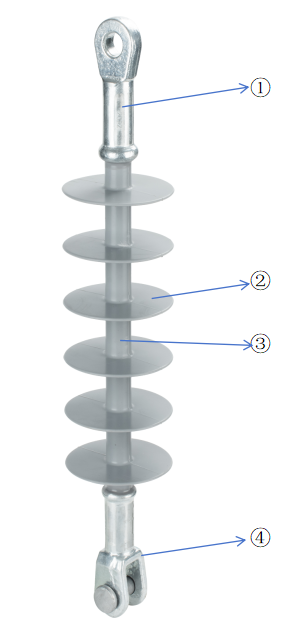
① End Fitting type: Tongue
Forged steel and hot dip galvanized,minimum thinkness of the galvanization:86µm
② The thickness of silicone rubber housing is more than 3mm,it is in accordance with IEC standard.
③ The acid-resistance,high terperature-resistance core rod use the materials epoxy & glassfiber.
④ End fitting type: Clevis
Forged steel and hot dip galvanized, minimum thinkness of the galvanization:86µm
Key Features:
High Mechanical Strength: With a rated mechanical failing load (MFL) of 70 kiloNewtons (kN), this insulator is engineered to withstand extreme mechanical stresses, including the weight of heavy conductors, wind pressure, and ice accumulation.
Excellent Electrical Insulation: Rated for 24kV systems, it provides reliable insulation under normal operating conditions and during overvoltage events like lightning strikes. The specific 675mm creepage distance (the path along the surface between the metal ends) is designed to prevent flashover—a disruptive electrical discharge—even in polluted or humid conditions.
Hydrophobicity & Pollution Resistance: This is a defining feature of the silicone rubber material. The surface is hydrophobic (water-repelling), causing moisture to bead up and roll off instead of forming a continuous conductive film. This property drastically improves performance in rain, fog, and high humidity, and reduces the need for frequent cleaning in areas with industrial or coastal pollution.
Lightweight & Vandal-Resistant: The composite polymer and fiberglass construction makes it significantly lighter than an equivalent porcelain insulator, easing transportation and installation. It is also highly resistant to impact and vandalism, as it does not shatter like glass or porcelain.
Long Service Life: The silicone rubber housing is resistant to ultraviolet (UV) radiation and weathering, ensuring stable performance and a long operational lifespan without degradation.
Production Process:
While specific proprietary steps may vary by manufacturer, the general production process involves:
Core Rod Production: A core rod is manufactured by pultruding continuous filaments of fiberglass through a bath of epoxy resin. This process creates an incredibly strong, lightweight, and non-brittle rod that serves as the structural backbone.
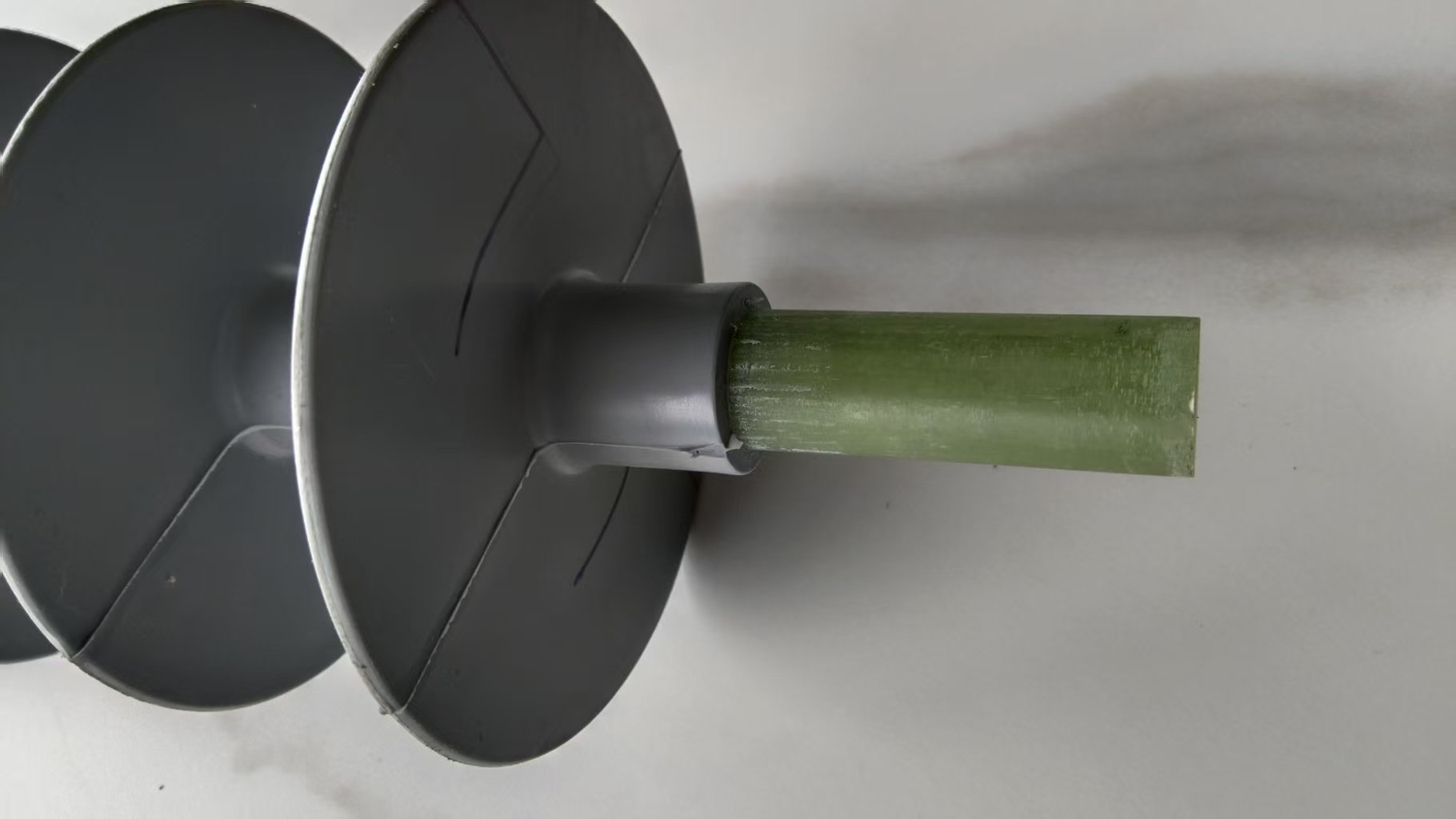
Molding of Housing and Sheds: The silicone rubber compound, filled with alumina trihydrate (ATH) for improved arc resistance and tracking resistance, is injection or transfer molded directly onto the core rod. This process forms the integral, seamless housing and the six evenly spaced sheds (as seen in the image). The mold is designed to create the precise shed profile that guarantees the 675mm creepage distance.
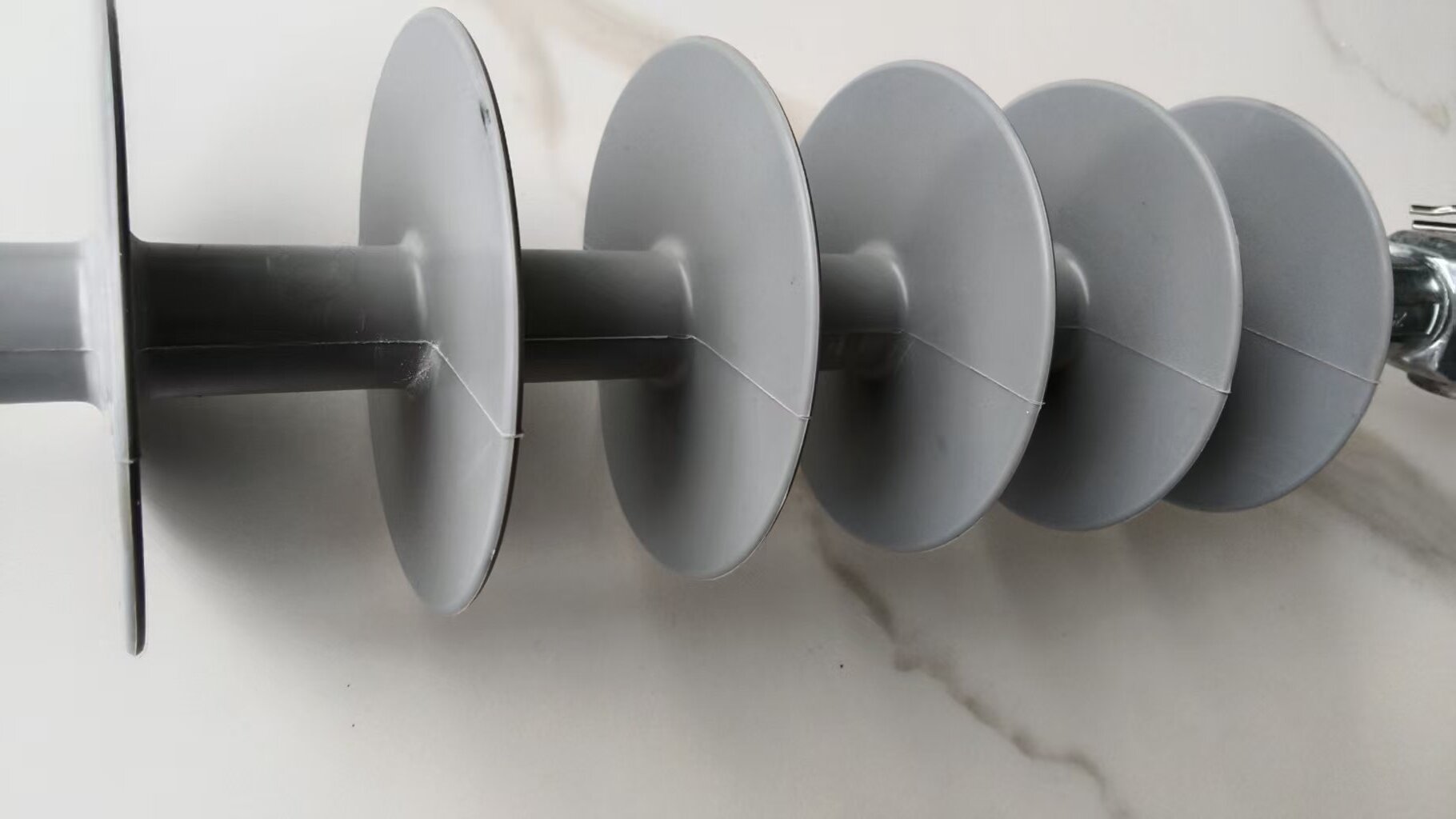
End Fitting Assembly: The metallic end fittings (typically forged or hot-dipped galvanized steel for corrosion resistance) are crimped onto the ends of the core rod under high pressure. This creates a permanent, high-strength mechanical connection.
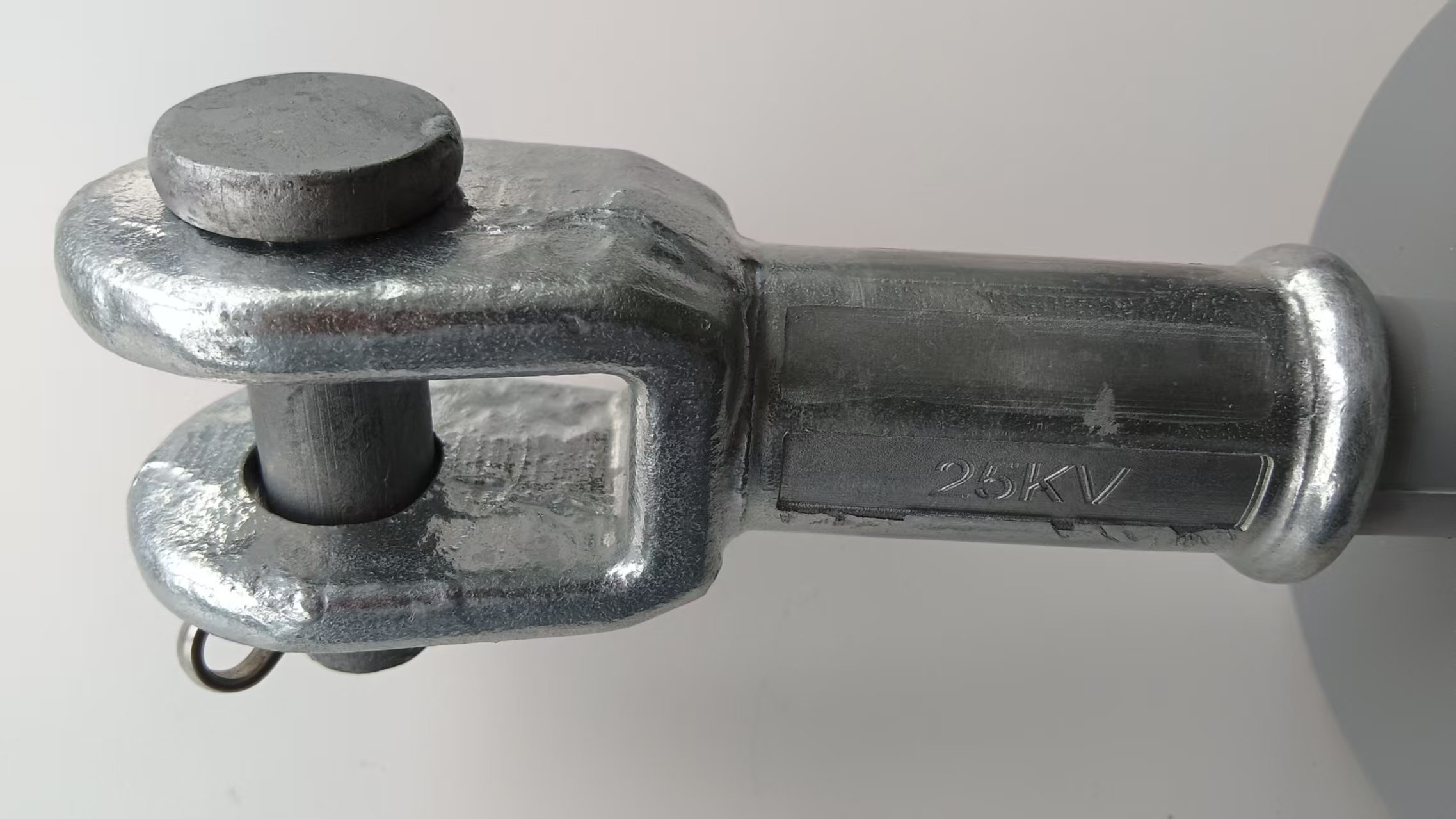
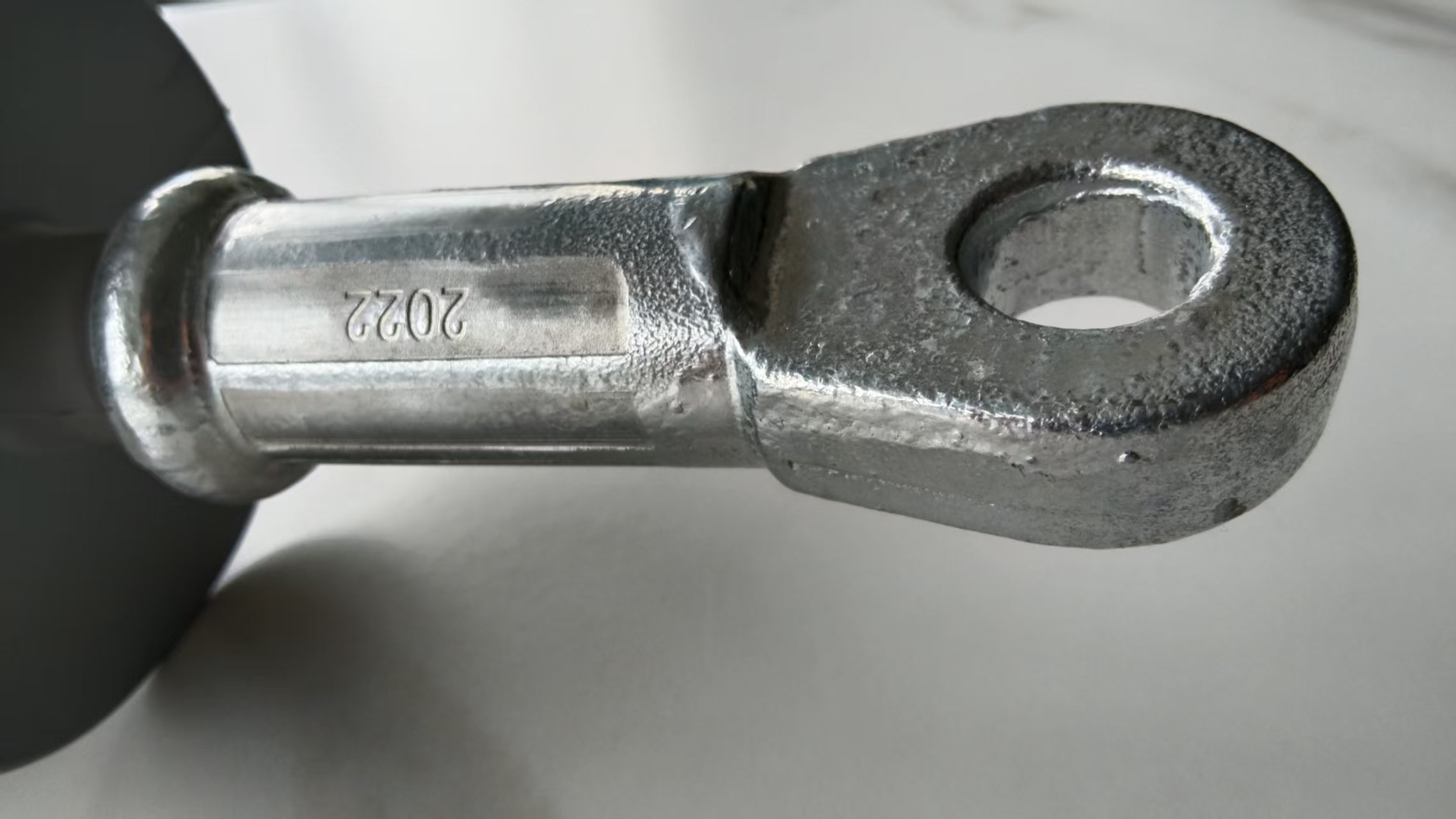
Curing and Testing: The assembled insulator undergoes a curing process to vulcanize the silicone rubber. Finally, each unit is subjected to rigorous quality control tests, including mechanical load tests (to verify the 70kN rating) and electrical tests (such as power frequency withstand tests) to ensure reliability.
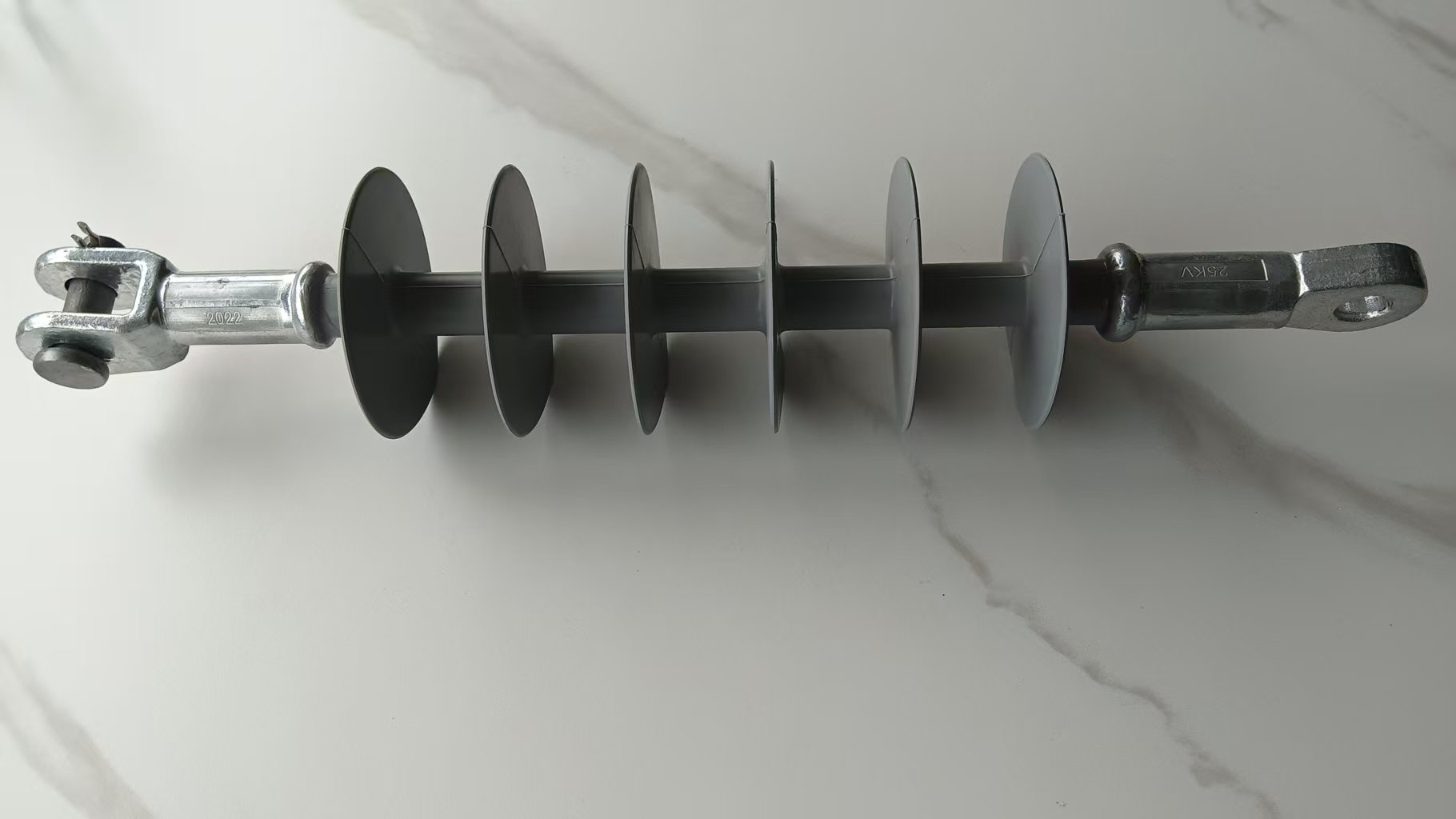
Applications:
This type of insulator is predominantly used in:
Medium Voltage Overhead Distribution Lines: It is ideally suited for supporting primary distribution lines (e.g., on wooden poles or concrete poles) in urban and rural areas where the 24kV rating is standard.
Transmission and Distribution Substations: Used for insulating and supporting busbars and other equipment within substations.
Harsh Environments: Its pollution resistance makes it the preferred choice for installation in coastal areas (salt spray), industrial zones (chemical pollution), and desert areas (dust and sand).
Lightning Protection Systems: It can be used to insulate ground wires or in other applications requiring a strong, reliable insulator with high dielectric strength.

Two Ends Of Connecting Hardware List
| Attachedto the letter | WQ | WD | WU | CT | TT | UU | YQ | RR | |
| On behalfof fittings | Socket -Ball | Socket -Tongue | Socket- Clevis | Ball- Bal | Clevis-Tongue | Tongue-Tongue | Clevis- Clevis | Y-Ball | Ring-Ring |
| Connectionmark | 16-16 | 16-7 | 16-7 | 16-16 | 7-7 | 7-7 | 7-7 | 7-7 | 7-7 |
1. According to the requirements of hardware in models are indicated in the attached letter;
2. According to the requirements of users can formulate and match ends fitting;
3. Silicone rubber color gray as the default,can also choose the other colors.
4. Custom made according to customer's drawings

 |  |
 |  |
 |  |  |
Introduction:
The product depicted is a 24kV, 70kN Composite Suspension Insulator. This is a critical component used in overhead power transmission and distribution systems. Its primary function is to mechanically support live electrical conductors (wires) while simultaneously providing robust electrical insulation, preventing current from flowing to the grounded transmission tower or pole.
Unlike traditional porcelain or glass insulators, this is a modern composite insulator. Its core structure consists of a fiberglass-reinforced epoxy resin (FRP) rod, which provides immense tensile strength. This rod is shielded by a housing and sheds made of silicone rubber, a key composite material that gives the insulator its superior performance characteristics. The image clearly shows the six evenly spaced, disc-like sheds and the metallic end fittings (tongue and clevis) used for connection.
Drawings:

Specifications:
Product Type | Dimensions | Mechanical | Electrical | ||||||||
Height | Mini Dry | Mini | Diameter | Number of | Diameter | Specified | Routine | Rated Voltage | Lightning | Power | |
FXB-24-70CT | 460 ±10 | 200 | 675 | 17 | 6 | 98 | 70 | 35 | 24 | 135 | 65 |
Order Information: | |||||||||||
Product Parts Display:

① End Fitting type: Tongue
Forged steel and hot dip galvanized,minimum thinkness of the galvanization:86µm
② The thickness of silicone rubber housing is more than 3mm,it is in accordance with IEC standard.
③ The acid-resistance,high terperature-resistance core rod use the materials epoxy & glassfiber.
④ End fitting type: Clevis
Forged steel and hot dip galvanized, minimum thinkness of the galvanization:86µm
Key Features:
High Mechanical Strength: With a rated mechanical failing load (MFL) of 70 kiloNewtons (kN), this insulator is engineered to withstand extreme mechanical stresses, including the weight of heavy conductors, wind pressure, and ice accumulation.
Excellent Electrical Insulation: Rated for 24kV systems, it provides reliable insulation under normal operating conditions and during overvoltage events like lightning strikes. The specific 675mm creepage distance (the path along the surface between the metal ends) is designed to prevent flashover—a disruptive electrical discharge—even in polluted or humid conditions.
Hydrophobicity & Pollution Resistance: This is a defining feature of the silicone rubber material. The surface is hydrophobic (water-repelling), causing moisture to bead up and roll off instead of forming a continuous conductive film. This property drastically improves performance in rain, fog, and high humidity, and reduces the need for frequent cleaning in areas with industrial or coastal pollution.
Lightweight & Vandal-Resistant: The composite polymer and fiberglass construction makes it significantly lighter than an equivalent porcelain insulator, easing transportation and installation. It is also highly resistant to impact and vandalism, as it does not shatter like glass or porcelain.
Long Service Life: The silicone rubber housing is resistant to ultraviolet (UV) radiation and weathering, ensuring stable performance and a long operational lifespan without degradation.
Production Process:
While specific proprietary steps may vary by manufacturer, the general production process involves:
Core Rod Production: A core rod is manufactured by pultruding continuous filaments of fiberglass through a bath of epoxy resin. This process creates an incredibly strong, lightweight, and non-brittle rod that serves as the structural backbone.

Molding of Housing and Sheds: The silicone rubber compound, filled with alumina trihydrate (ATH) for improved arc resistance and tracking resistance, is injection or transfer molded directly onto the core rod. This process forms the integral, seamless housing and the six evenly spaced sheds (as seen in the image). The mold is designed to create the precise shed profile that guarantees the 675mm creepage distance.

End Fitting Assembly: The metallic end fittings (typically forged or hot-dipped galvanized steel for corrosion resistance) are crimped onto the ends of the core rod under high pressure. This creates a permanent, high-strength mechanical connection.


Curing and Testing: The assembled insulator undergoes a curing process to vulcanize the silicone rubber. Finally, each unit is subjected to rigorous quality control tests, including mechanical load tests (to verify the 70kN rating) and electrical tests (such as power frequency withstand tests) to ensure reliability.

Applications:
This type of insulator is predominantly used in:
Medium Voltage Overhead Distribution Lines: It is ideally suited for supporting primary distribution lines (e.g., on wooden poles or concrete poles) in urban and rural areas where the 24kV rating is standard.
Transmission and Distribution Substations: Used for insulating and supporting busbars and other equipment within substations.
Harsh Environments: Its pollution resistance makes it the preferred choice for installation in coastal areas (salt spray), industrial zones (chemical pollution), and desert areas (dust and sand).
Lightning Protection Systems: It can be used to insulate ground wires or in other applications requiring a strong, reliable insulator with high dielectric strength.

Two Ends Of Connecting Hardware List
| Attachedto the letter | WQ | WD | WU | CT | TT | UU | YQ | RR | |
| On behalfof fittings | Socket -Ball | Socket -Tongue | Socket- Clevis | Ball- Bal | Clevis-Tongue | Tongue-Tongue | Clevis- Clevis | Y-Ball | Ring-Ring |
| Connectionmark | 16-16 | 16-7 | 16-7 | 16-16 | 7-7 | 7-7 | 7-7 | 7-7 | 7-7 |
1. According to the requirements of hardware in models are indicated in the attached letter;
2. According to the requirements of users can formulate and match ends fitting;
3. Silicone rubber color gray as the default,can also choose the other colors.
4. Custom made according to customer's drawings

 |  |
 |  |
 |  |  |